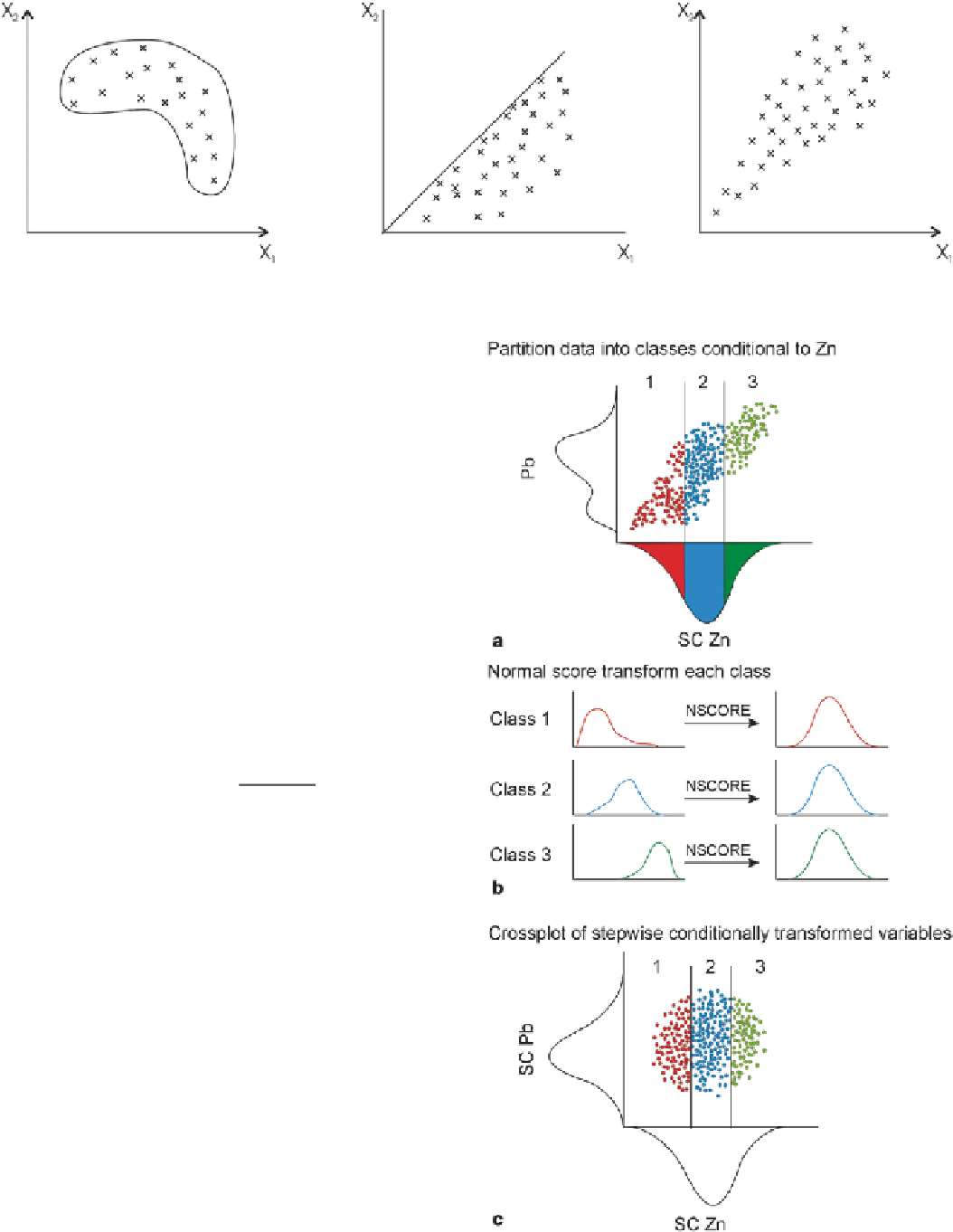Geoscience Reference
In-Depth Information
Fig. 10.17
Non-linear, constraint, and hetersoscedastic features
tion between the variables is accounted for in the forward
and back transformations.
10.6.6
Super-Secondary Variables
Under a multivariate Gaussian model, it can be shown that
multiple secondary data can be co-simulated by merging it
into a single secondary variable, such that a standard co-
simulation procedure can be applied (Babak and Deutsch
2009
). The setting that is most practical is when collocated
co-simulation is deemed appropriate.
All secondary data can be merged as a linear combination
into a single secondary variable that can be used in the con-
ventional collocated cokriging.
n
sec
∑
cy
·
i
si
,
( )
i
=
1
y
u
=
ρ
super
secondary
super
secondary
The
c
i
weights are calculated from the well known cokriging
equations:
n
sec
∑
c
⋅ = =
ρρ
,
i
1,...,
n
j
ij
,
i
,0
sec
j
=
1
The left hand side
ρ
i,j
values represent the redundancy be-
tween the secondary data. The right hand side
ρ
i,0
values rep-
resent the relationship between each secondary data and the
primary variable being predicted. The correlation coefficient
of the super secondary value with the primary variable being
estimated is based on the cokriging variance:
n
sec
∑
ρ
=
c
⋅
ρ
i
i
,0
super
secondary
i
=
1
The expression inside the square root is one minus the estima-
tion variance, which would is precisely the correlation coef-
Fig. 10.18
Stepwise conditional transform of Pb using Zn as a primary
variable




